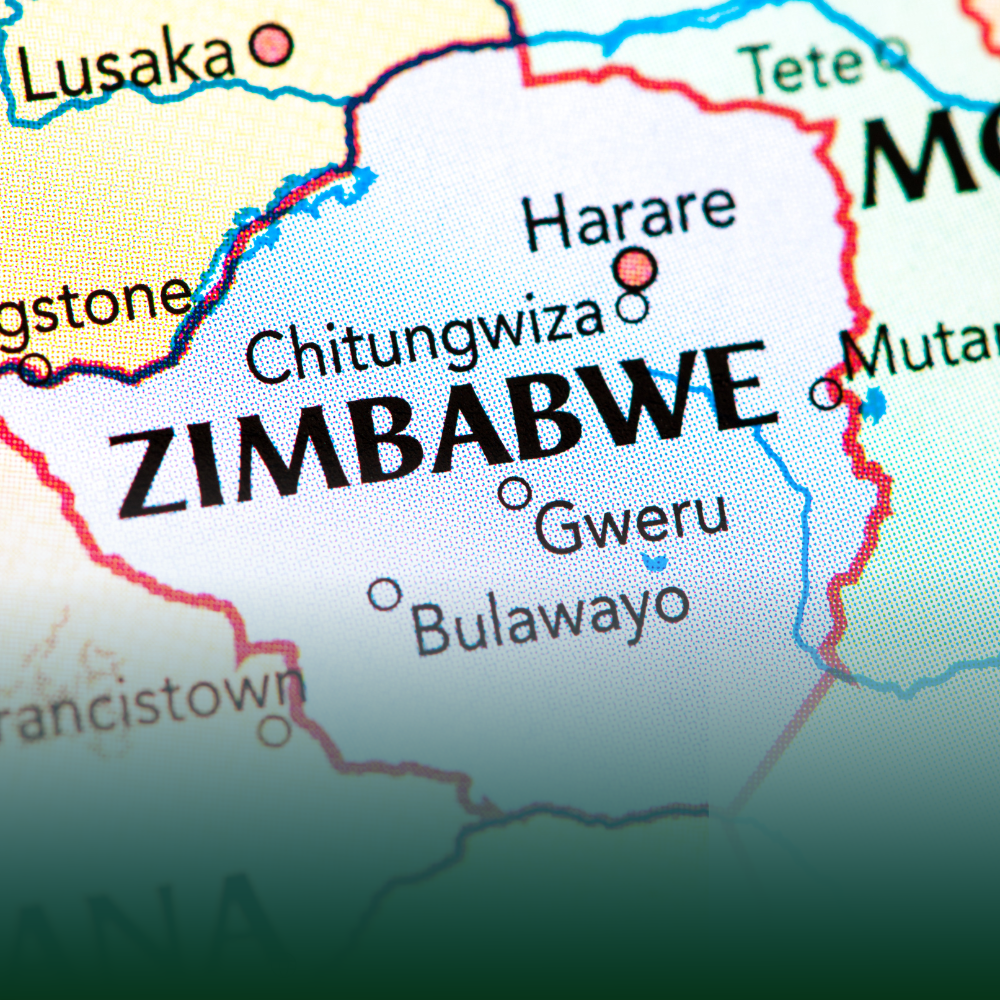False: The Climate Crisis Is Not Limited To A Tiny Land Mass In Zimbabwe

A tweet posted on 16th January 2020 was shared with us on Whatsapp, claiming that drought only affects a tiny land mass in sub-Saharan Africa. The tiny land mass referred to is Zimbabwe abbreviated as “Zim”.
The post also claims Zimbabwe’s neighbouring countries Zambia, Botswana, Malawi, Mozambique and South Africa are not affected by this drought.
FACT CHECK
First, Sub-Saharan Africa is the area and regions of Africa located south of the Sahara, geographically. These include Central Africa, East Africa, Southern Africa, and West Africa.
Drought in Zimbabwe and Its Neighboring Countries
In the last quarter of 2019, the Southern African Regional Inter Agency Standing Committee Africa (RIASCO) reported that more than 11 million people were experiencing crisis or emergency levels of food insecurity in nine Southern African countries caused by a deepening drought and climate-related crisis, the United Nations Office for the Coordination of Humanitarian Affairs says.
At the beginning of November 2019 Angola, Botswana, Lesotho and Namibia had declared states of drought emergency, requiring international assistance to address the worsening food insecurity situation, according to the Southern African Development Community (SADC).
Between January and March 2019, a prolonged dry spell affected the southern, western and parts of Lusaka, eastern and central provinces in Zambia. This affected crop production in most districts and households. It is estimated that around 1.42 million people faced high levels of acute food insecurity between July and September 2020, the United Nations Office for the Coordination of Humanitarian Affairs (UN-OCHA) states.
According to the 2020 Botswana National Drought Plan report by the United Nations Convention to Combat Desertification, Botswana has experienced multiple, multi-year droughts since the 1950s characterized into four categories: meteorological, hydrological, agricultural, and socioeconomic.
“Records show that drought has occurred in the following years: 1959/60, 1961/62, 1963/64, 1964/65, 1969/70, 1972/73, 1978/79, 1981/82, 1982/83, 1983/84, 1984/85, 1985/86, 1991/92, 1993/94, 1994/95, 1995/96, 1997/98, 1998/99, 2001/02, 2004/5, 2005/06, 2007/08 as well as 2012,” as stated in the report.
As for Malawi, between October 2021 and January 2022 drought was recorded as well as harsh drought conditions registered in the period of October-December 2021, with a high likelihood of below-average rainfall through the January-March 2022 period, making the October 2021 to January 2022 period to be one of the driest periods for the country since 1970, with the central region of Malawi experiencing one of the most severe droughts on record, based on information from the Famine Early Warning Systems Network (FEW NET).
The Mozambique National Adaptation Programme of Action by the Ministry for the Coordination of Environmental Affairs recognizes that the country is vulnerable to catastrophes and that hazards result from climate change. Of all the natural hazards affecting the country, drought is the most common and the most devastating.
In 2021, South Africa declared its third national state of disaster for drought in the last four years, according to the October 2022 Country, Climate and Development Report .
Between 2015 and 2018, the Western Cape experienced one of the most severe droughts in its recorded history. “The drought resulted in a decrease in tourist numbers, food prices and food insecurity increasing :- especially for staple food items such as maize. There was loss of employment with about 20,000 jobs being lost mostly in agriculture and this was attributed to the drought).”
In 2018 and 2019, severe drought was reported in Zimbabwe which led to crop losses and economic hardship affecting seven million people in urban and rural areas of this country, according to the United Nations Office for the Coordination of Humanitarian Affairs (UN-OCHA).
Drought in Sub-Saharan Africa
Sub-Saharan Africa has a long record of droughts that have caused extensive damage in Southern Madagascar, Angola (western and coastal regions), central Nigeria, Kenya and southern Somalia (coast), and northern Zambia, according to the Global Drought Observatory 2021 report.
Following consecutive failed rainy seasons, according to the State of Climate in Africa 2021 report, droughts worsened in East Africa especially in Ethiopia, Somalia, parts of Kenya and in Southern Madagascar. This left 58 million people with acute food insecurity.
“East Africa, and in particular, parts of Somalia, Djibouti, Ethiopia, and Kenya, experienced the driest conditions and hottest temperatures in the years 2021 and 2022. As a result, over 13 million people experienced acute food and water shortages and a projected 25 million will face a similar fate by mid-2022,” the United Nations Environment Programme’s article stated.
In the Horn of Africa, around 420,000 people have been internally displaced by drought since 2021. In addition, approximately 7.4 million people are food insecure and more than 4.7 million children are facing alarming malnutrition. More to this, over 1 million livestock animals have died, according to the United Nations.
The UN Refugee Agency says. More than 800,000 people in Somalia have been internally displaced, while around 16,000 have crossed the border into Ethiopia and 4,000 have fled to Kenya. Additionally in Kenya, over four million people had no food and over a million livestock died in 2022.
In 2019, millions of people in Zimbabwe, South Sudan, the Democratic Republic of Congo and the Central Sahel region were facing famine and hunger. This was due to the prolonged drought in these countries, according to an article by the United Nations.
Rating/ verdict
FALSE- the claim that droughts mostly affect a tiny land mass in Sub-Saharan Africa. Drought cases have also been reported in other parts of Sub-Saharan Africa, including countries bordering Zimbabwe.
This fact-check was produced by Debunk Media Initiative with support from Code for Africa’s PesaCheck, International Fact-Checking Network and African Fact-Checking Alliance network.
2021 Africa Check Award-winning Fact-Checker, Media Challenge Initiative Fellow class of 2020, 2022 Code For Africa and International Fact-Checking Network Climate Change Fact-Checking Fellow, 360 Digital Sherlock, trained by the Atlantic Council’s Digital Forensic Research Lab in open-source intelligence.

